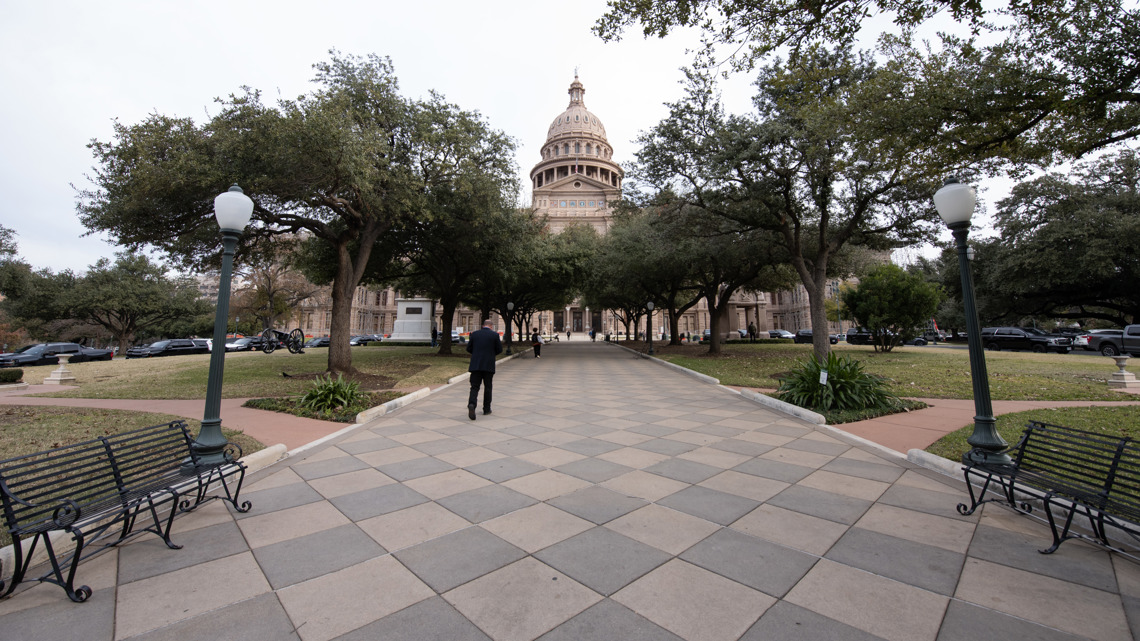
A boost in public school spending, school vouchers and money for water systems are other highlights of the budget, which was bolstered by a $24 billion surplus.
AUSTIN, Texas — THE TEXAS TRIBUNE – Texas lawmakers signed off Saturday on a $338 billion two-year spending plan that directs billions toward hiking teacher pay, cutting property taxes and shoring up the state’s water infrastructure, after House and Senate budget writers ironed out their differences and won approval from both chambers on their final draft.
The budget now heads to Comptroller Glenn Hegar, who is expected to verify there is enough revenue to cover the Legislature’s planned spending — the last step before the 1,056-page bill reaches Gov. Greg Abbott’s desk.
The spending plan doles out the money to run the state’s business for the next two years, from September through the end of August 2027. It includes the underlying funding for some of the biggest bills passed this session, much of it paid for with general revenue, Texas’ main source of taxpayer funds used to cover core services.
Lawmakers approved $149 billion in general revenue spending, with the rest drawn from federal funds and other state revenue earmarked for specific uses.
The budget’s $338 billion price tag is nearly $17 billion more than what lawmakers budgeted two years ago, about a 5% increase. However, the Legislature is expected to approve additional spending for the current cycle — which runs through the end of August — in what is known as the supplemental budget, lessening the year-to-year increase.
A large chunk of the budget — more than one out of every seven dollars — is devoted to maintaining and providing new property tax cuts, a tab that has grown to $51 billion. For the last several years, lawmakers have tried to rein in Texans’ property tax bills by sending billions of dollars to school districts to reduce how much in property taxes they collect from homeowners and businesses.
The state does not collect property taxes; its coffers are filled through a combination of sources that include sales tax, taxes on oil and gas production, and franchise taxes on businesses.
With the help of a projected $24 billion budget surplus, the Legislature is spending some $45 billion to maintain existing cuts lawmakers have enacted since 2019, with the rest going toward a mix of “compression” — sending money to school districts to replace funds they otherwise would have collected in property taxes, thus lowering tax rates — and raising the state’s homestead exemption, or the amount of a home’s value that can’t be taxed to pay for public schools. A chunk of the money will also go toward tax cuts for businesses.
About $3 billion of the property tax relief will come from money lawmakers had originally planned to spend on border security. The team of five senators and five House members who hammered out the final budget draft diverted nearly half of the $6.5 billion set aside for the state’s border clampdown in earlier versions, marking one of the biggest eleventh-hour budget changes.
It was a reflection of a monthslong decrease in illegal border crossings and the billions that could be coming to Texas under a tentative federal plan to reimburse states for their immigration enforcement efforts under the Biden administration.
Sen. Joan Huffman, a Houston Republican who chairs the Senate Finance Committee, said the spending plan is a “responsible, balanced budget that falls within all constitutional and statutory spending limits and meets the needs of our rapidly growing state.”
“The Texas economy is the envy of the nation, and the budget will secure our state’s prosperity for generations to come,” Huffman, the Senate’s lead budget writer, said on the floor Saturday. “We have leveraged our state surplus over several sessions to make targeted, one-time investments without burdening future budgets.”
Rep. Greg Bonnen, R-Friendswood and Huffman’s counterpart in the House, said the budget “prioritizes public education, tax relief, public safety, infrastructure and improving taxpayer services for individuals and businesses.”
The House and Senate have been largely aligned on budget matters this session. Each chamber approved plans earlier this year that spent similar amounts overall and lined up on big-ticket items including how much money to put toward school vouchers, property tax cuts and water infrastructure. Much of the fine print — outlining how that money would be used — was worked out in separate bills.
Among the marquee items is an $8.5 billion boost for Texas’ public schools, the product of weeks of negotiations between the chambers. The funding package, known as House Bill 2, provides extra money for teacher and staff pay raises, educator preparation, special education, safety requirements and early childhood learning.
Another $1 billion in the budget is set aside for a school voucher program that will allow families to use public money to fund their children’s private school tuition or pay for a range of school-related expenses. Abbott has already signed the voucher bill into law and has said he will approve the school funding bill.
“We passed historic policies for the nearly 6 million students across Texas, but this is where we bring those policies to life,” Sen. Brandon Creighton, R-Conroe and chair of the Senate Education Committee, said of the state budget, known as Senate Bill 1. “Without SB 1, those reforms are just words on paper. This budget turns our promises into action and gives lasting weight to our priorities.”
Shannon Halbrook, a fiscal policy expert at the left-leaning think tank Every Texan, said the budget contains “some things that we consider wins with an asterisk.”
“We’re definitely happy that they’re investing more into public education,” Halbrook said. “It’s not quite the way we would have preferred for them to do it. For example, we’ve consistently advocated for increasing the basic allotment, because it’s a really simple way to provide additional funding for schools across the board. Instead, HB 2 chooses to kind of do it in a much more complicated, convoluted way.”
More than 70% of the budget is reserved for education and health and human services, the latter of which includes Medicaid and the Children’s Health Insurance Program, which provides health coverage for children from low-income households that make too much to qualify for Medicaid.
One lingering uncertainty was how much the state would hike pay for personal care “community attendants,” who are paid through the Medicaid program to help patients with tasks such as laundry, errands, grooming, eating and medication. The House had proposed increasing their base wage to more than $14 an hour, nearly $2 more than the Senate’s proposal.
Sen. Lois Kolkhorst, a Brenham Republican and the chamber’s lead health care budget writer, said the issue amounted to “one of the most contentious parts” of her section of the budget. In the end, the chambers agreed to meet in the middle, spending nearly $1 billion in general revenue to hike the attendants’ base pay to $13 an hour.
Rep. Donna Howard, D-Austin, said the attendants fulfill a critical function caring for vulnerable Texans, and even with the pay raises, “we have not gotten anywhere near where we need to be.” But, she acknowledged, “we did get something.”
“This is the Legislature’s budget. It doesn’t have everything in it we want,” said Howard, a longtime member of the House Appropriations Committee. “That’s the whole point of why we’re here. It’s a compromise with the Senate … And any compromise doesn’t include everything we fought for in the House.”
The budget also puts some $10 billion toward the state’s energy, water and broadband infrastructure. That includes $5 billion to double the Texas Energy Fund, a low-interest taxpayer-funded loan program meant to incentivize the development of gas-fueled power plants.
Lawmakers are also putting $2.5 billion into the Texas Water Fund as part of the supplemental budget for the current spending cycle. The fund is used to pay for new water supply projects — such as desalination — repairing old water infrastructure, conservation and flood mitigation projects.
In November, voters will be asked to approve a proposal to allot $1 billion a year starting in 2027— $20 billion in total — until 2047 to secure the state’s water supply.
